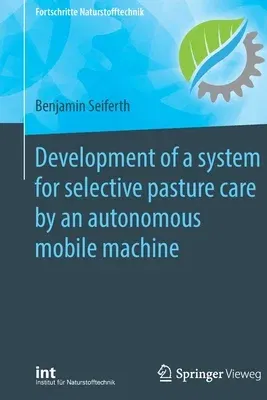Benjamin Seiferth
(Author)Development of a System for Selective Pasture Care by an Autonomous Mobile Machine (2020)Paperback - 2020, 2 June 2020

Qty
1
Turbo
Ships in 2 - 3 days
In Stock
Free Delivery
Cash on Delivery
15 Days
Free Returns
Secure Checkout
Part of Series
Fortschritte Naturstofftechnik
Print Length
106 pages
Language
English
Publisher
Springer Vieweg
Date Published
2 Jun 2020
ISBN-10
3662616548
ISBN-13
9783662616543
Description
Product Details
Author:
Book Edition:
2020
Book Format:
Paperback
Country of Origin:
NL
Date Published:
2 June 2020
Dimensions:
23.39 x
15.6 x
0.66 cm
ISBN-10:
3662616548
ISBN-13:
9783662616543
Language:
English
Location:
Berlin, Heidelberg
Pages:
106
Publisher:
Weight:
181.44 gm

